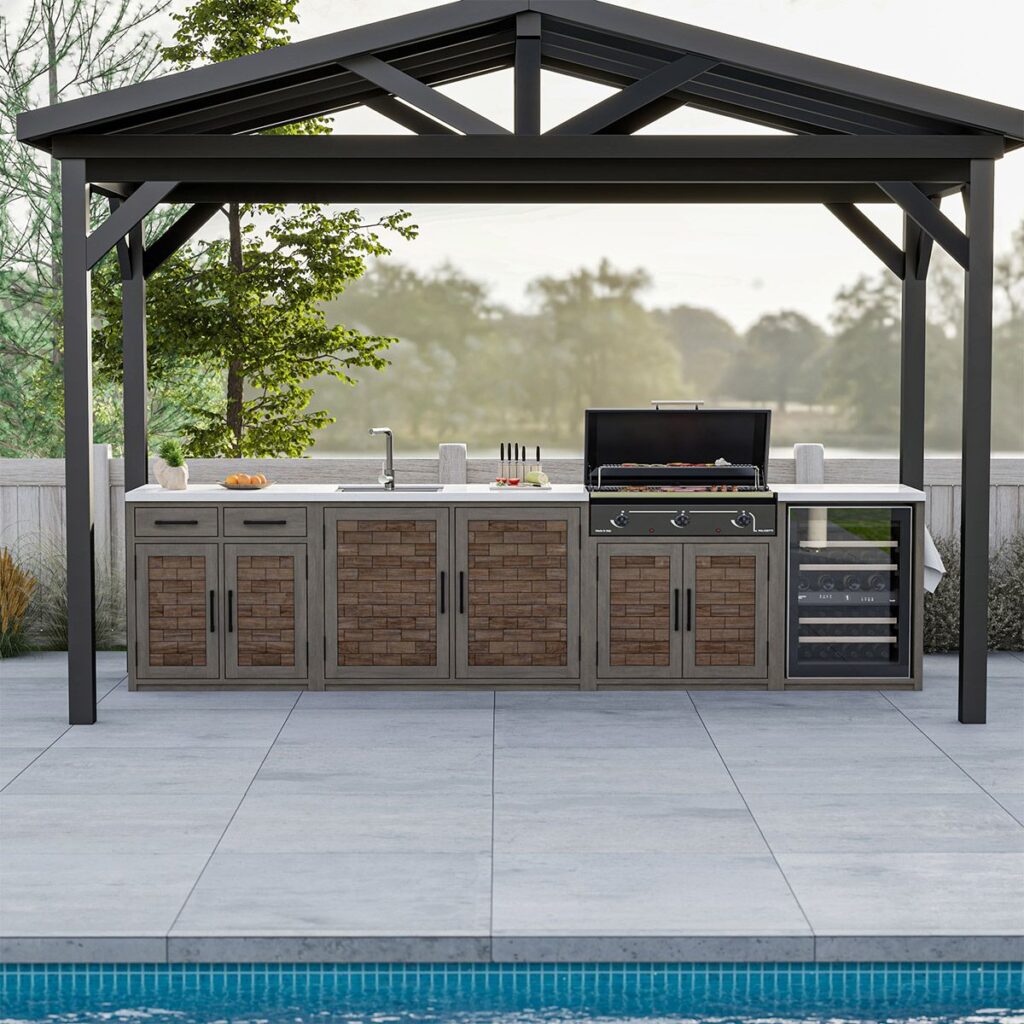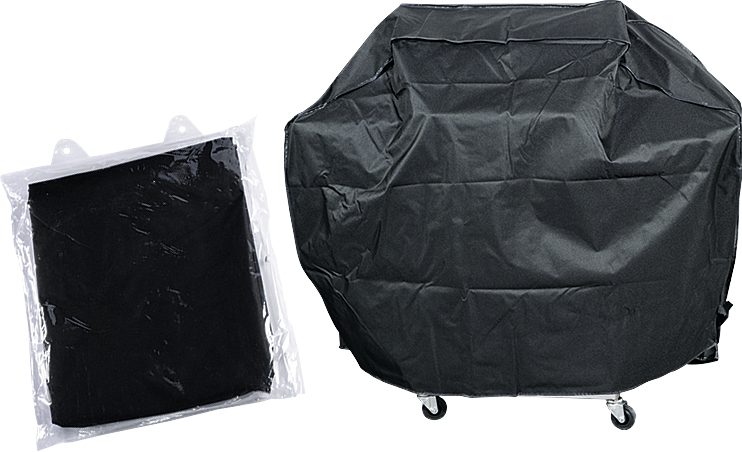Outdoor cooking has become a major part of home life. Many people love having friends over, preparing food outdoors, and enjoying the smoky flavor that only grilling can give. But when it comes to choosing the right type of gas grill, homeowners often face one big question — should you go for a freestanding or a built-in gas grill? This decision affects not only how you cook but also how your entire outdoor space looks and functions.
Freestanding and built-in gas grills serve the same purpose — but they fit very different lifestyles. Freestanding grills are mobile and flexible, while built-in ones are permanent and elegant. The right choice depends on your cooking habits, your patio layout, and your long-term outdoor design goals.
Both styles have strong advantages. If you want mobility and convenience, a freestanding grill may be better. If you want a seamless outdoor kitchen that adds value to your home, built-in is often the smarter choice. Let’s compare them from every angle so you can decide what truly fits your needs.
What’s the main difference between freestanding and built-in gas grills?
Freestanding grills are designed with mobility in mind. They come with a full cart frame, wheels, and side shelves for utensils. You can move them easily across your patio or backyard. Built-in gas grills, on the other hand, are meant to stay in one place. They are installed into an outdoor kitchen island, often surrounded by stone, concrete, or stainless steel cabinetry.
Freestanding gas grills are portable units with wheels and storage, while built-in gas grills are permanent fixtures integrated into outdoor kitchens. Both types deliver great performance, but their setups differ in design, mobility, and installation.
Dive deeper
Freestanding grills are a great choice for people who rent homes or enjoy rearranging their outdoor spaces. You can move them to avoid rain, take them on trips, or store them away during winter. Most freestanding models include space to hold a propane tank, so you don’t need any fixed gas line.
Built-in grills are more like outdoor kitchen appliances. They connect directly to a natural gas or propane line, which means you’ll never run out of fuel mid-cook. They’re usually made of 304 stainless steel, giving them a sleek, modern look that enhances the entire backyard.
| Feature | Freestanding Grill | Built-in Grill |
|---|---|---|
| Mobility | High | Low |
| Installation | Plug-and-play | Requires construction |
| Fuel | Portable propane tank | Direct gas line |
| Appearance | Compact and flexible | Seamless and permanent |
| Maintenance | Easy to move and clean | Fixed and requires built-in access |

Which type of gas grill is easier to install outdoors?
Installation is one of the biggest differences between the two. A freestanding grill is ready to use right out of the box. You assemble the parts, connect the propane tank, and you’re ready to cook. Built-in grills require planning, cutting, and sometimes professional help.
Freestanding grills are easier and faster to install, while built-in gas grills need professional setup and a fixed connection.
Dive deeper
When you buy a freestanding grill, the setup takes about an hour. It’s perfect for homeowners who want quick results. Built-in grills require more work — you must prepare an island base, ensure ventilation, and run a gas line to the grill’s location. That makes it a semi-permanent project.
Built-in setups add long-term value. They create a complete outdoor kitchen where you can include drawers, fridges, and prep space. However, once it’s installed, it’s hard to relocate.
| Setup Aspect | Freestanding | Built-in |
|---|---|---|
| Time Required | 30–60 minutes | 1–2 days |
| Tools Needed | Basic tools | Masonry and plumbing tools |
| Skill Level | Beginner-friendly | Professional required |
| Cost | Low | High |

Do freestanding gas grills perform as well as built-in models?
Performance is key for serious grillers. Many wonder whether freestanding models can match the power and precision of built-in ones. In reality, both can cook well if made with quality burners and materials.
Yes, freestanding gas grills can perform just as well as built-in ones if they use the same burner technology and construction.
Dive deeper
The main difference lies in consistency and heat retention. Built-in grills often have thicker stainless steel fireboxes that hold heat better. Freestanding models sometimes lose heat faster due to lighter materials. Still, high-end freestanding grills can match or even exceed built-in versions in temperature range.
Built-in grills often include infrared burners for searing steaks, rotisserie kits, and heavy-duty grates. These features are available in some freestanding designs too, especially larger 4-burner or 5-burner versions.
| Comparison | Freestanding | Built-in |
|---|---|---|
| Heat Output | Up to 60,000 BTU | Up to 70,000 BTU |
| Temperature Range | 200°F–700°F | 250°F–800°F |
| Infrared Option | Optional | Common |
| Cooking Area | Medium | Large |
Performance depends more on brand and build quality than on grill type. Premium freestanding units with stainless steel burners can deliver restaurant-grade cooking in any backyard.
Which gas grill style offers better heat control and consistency?
Heat control is what separates casual grilling from true mastery. Built-in grills are known for their consistent heat zones. Freestanding grills can vary depending on insulation and lid design.
Built-in gas grills usually offer better heat control due to heavier materials and even distribution systems.
Dive deeper
Built-in grills retain heat inside their insulated compartments. This design reduces flare-ups and provides more predictable cooking results. Freestanding grills rely more on airflow and lid sealing. Many newer freestanding models now include double-layer lids that improve temperature stability.
If you enjoy slow-cooking ribs or smoking fish, a built-in model provides steady low heat. If you prefer quick searing and frequent movement, a freestanding grill offers the flexibility you need.
| Feature | Built-in | Freestanding |
|---|---|---|
| Heat Retention | Excellent | Good |
| Temperature Control | Precise | Adjustable |
| Best For | Slow cooking | Quick grilling |
Is a built-in gas grill worth the higher installation cost?
Cost plays a major role in deciding between these two grill types. Built-in grills are expensive upfront but can last decades.
A built-in gas grill is worth the cost if you plan to grill often and want a permanent outdoor kitchen setup.
Dive deeper
The cost of a freestanding grill ranges from $300 to $1,200, while built-in grills start around $1,000 and can go above $5,000. The installation can add another $1,000 or more depending on your outdoor setup.
However, built-in grills increase property value. They give your patio a custom look and can make your home more attractive to buyers. Freestanding grills, on the other hand, are easier to upgrade or replace.
| Expense Type | Freestanding | Built-in |
|---|---|---|
| Grill Price | $300–$1,200 | $1,000–$5,000 |
| Installation | Minimal | $500–$1,500 |
| Lifespan | 5–10 years | 10–20 years |
| Home Value Impact | Low | High |
If you view grilling as a long-term hobby, a built-in setup is an investment. If you prefer flexibility, freestanding is a smart and budget-friendly option.
Which design lasts longer in outdoor conditions?
Durability matters when your grill faces rain, heat, and wind. Material quality and maintenance make the biggest difference.
Built-in gas grills typically last longer because they use heavier stainless steel and are less exposed to movement damage.
Dive deeper
Freestanding grills face more wear and tear due to frequent moving and exposure. Built-in models stay fixed in a protected island base, which shields them from elements. Both types can last long if made with 304 stainless steel and covered properly.
Use weatherproof covers and regular cleaning to extend any grill’s lifespan. Keep burners dry and use stainless cleaner to prevent rust.
| Factor | Freestanding | Built-in |
|---|---|---|
| Exposure | High | Medium |
| Structure | Lightweight | Solid frame |
| Material | Mixed metal | Heavy-duty stainless steel |
| Average Lifespan | 8 years | 15 years |

Conclusion
Choosing between a freestanding and built-in gas grill depends on how you live and cook. A freestanding grill gives freedom, portability, and a lower cost. It suits small spaces, renters, and casual grillers. A built-in grill fits those who want a permanent outdoor kitchen, high performance, and a sleek look that adds home value.
Both styles can deliver amazing meals. The key is to think about your long-term needs — mobility or permanence, speed or design, simplicity or investment. Once you know your priorities, your perfect outdoor grill choice will be clear.
FAQ
What’s the ideal fuel source for built-in vs freestanding grills?
Freestanding grills often use propane tanks, while built-in models usually connect to natural gas lines for a continuous supply.
(Source: thegardenhouse.ie)
Can I convert a freestanding gas grill to a built-in unit?
Yes, conversion is possible, but you’ll need a compatible model and may require new burners or orifices to match the installation.
(Source: broilkingbbq.com)
How much space do I need for a built-in gas grill installation?
You should allow enough width, depth, and clearance around the grill and its surrounding countertop so ventilation and access are safe.
(Source: friedmansappliance.com)
Do built-in grills really increase my home’s resale value?
Yes — because built-in grills are part of a custom outdoor kitchen, they can boost curb appeal and appeal to buyers.
(Source: elitepatiodirect.com)
What are the maintenance differences between freestanding and built-in grills?
Freestanding grills are easier to move and access for cleaning; built-ins require proper access and may cost more to service.
(Source: lowes.com)
Is it okay to use a freestanding grill inside an outdoor kitchen island?
Yes, but you must ensure the island has proper ventilation and clearance so the unit remains safe and performs well.
(Source: mrappliance.com)
What happens if I need to replace a built-in grill later?
Replacing a built-in can be costly because you’ll have to match cut-out dimensions and possibly remodel surrounding cabinetry.
(Source: reddit.com)
How frequent should I grill to justify choosing a built-in model?
If you grill regularly and host outdoors often, a built-in model may be worth it; if you grill occasionally, a freestanding model may make more sense.
(Source: uakc.net)

